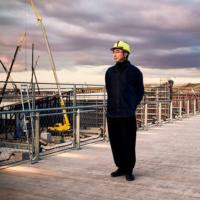Asakusa has long been a big tourist attraction for visitors from the world over, but its lure is now hitting a peak, with a series of events under way to commemorate the 50th anniversary of reconstruction of the main hall at Sensoji Temple.
The events, taking place in the temple grounds and their vicinity through mid- to late November, include the dai-kaicho (great opening) of the temple's main hall, where one of the Bodhisattva Kannon statues is being taken out for public viewing. The hall burned down in World War II air raids, but its reconstruction was completed in October 1958.
On Nov. 16 at 11 a.m., Buddhist monks from China, Tibet and Thailand will parade as part of a special peace ceremony and to conclude the opening.
West of Sensoji Temple is Okuyama Fuukei, where some 60 shops and teahouses have been set up to re-create the feel of the Edo Period (1603-1867) in the area, which was formerly known as Okuyama. This is where the commercial culture of Asakusa, characterized by street performers, playhouses and teahouses, sprouted up during that era.
Running through Nov. 25, the shops feature various craftsmen at work, such as those engraving glassware to create beautiful Edo Kiriko glasses. Toys, textiles and woodblock prints are also on sale. Also during this time, commemorative brass koban (coins), which look like Japan's old, oval-shaped gold coins, will be on sale for ¥300. They can be used like real money both in neighborhood shops and in the Nakamise street shops that lead up to the main hall.
For more information, visit the temple's Web site at www.senso-ji.jp/guide/hondo_e.html



















With your current subscription plan you can comment on stories. However, before writing your first comment, please create a display name in the Profile section of your subscriber account page.